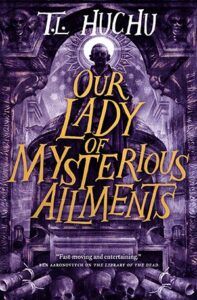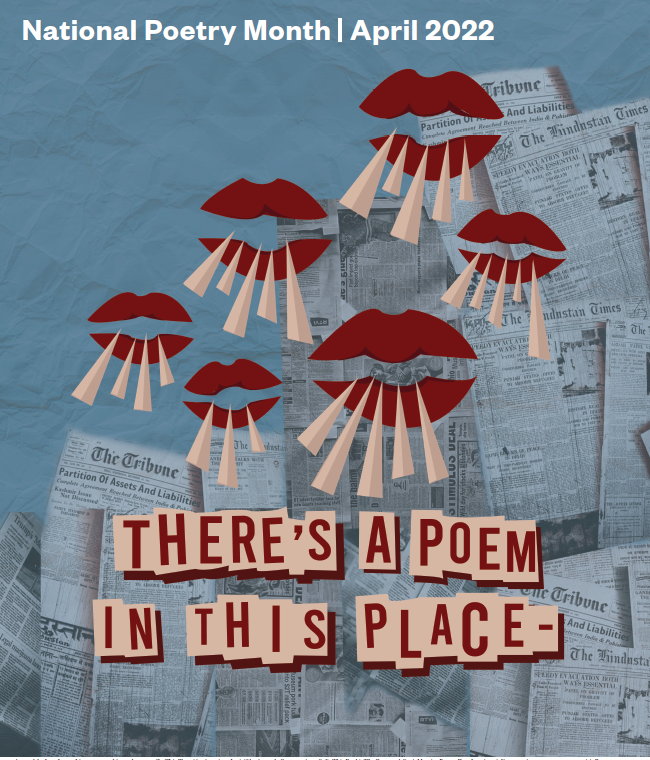School Library Programming Ideas for National Poetry Month
April is National Poetry Month. It was started in 1996 by the Academy of American Poets to bring more awareness to the importance of poetry and to highlight poets’ role in our culture. When I was in the classroom, I loved teaching poetry, which I know isn’t many teachers’ experience. Part of the joy for me was taking my classes to the library for programming my librarians had planned. After the long slog that is January through March in public school, celebrating poetry in April, after spring break usually, was a great way to get my students to buy back in. It helped bring creativity and fun to the classroom after months of preparing for standardized testing.
Planning programming in the school library for National Poetry Month is a great way for the library to partner with teachers. One of my focuses this year, after a year of virtual teaching, has been how to make teachers’ lives easier. I don’t want to create any more work for teachers, but instead offer reprieve. Many of these programs are easy to participate in and add to student enrichment without adding to teacher workload. Collaboration is one of my favorite parts of being a school librarian, and National Poetry Month is one of the best times to encourage collaboration.
As with any program, bringing awareness is key. You can get a free poster that’s available to download, to include on digital announcements, and a physical copy can be requested to post in the library and for teachers to put in their classrooms. The poster was designed by a student and selected through a competition. There’s a cash prize for the winner and the runner up, and the student will get their artwork displayed in schools, libraries, and at literary events all over the United States. Keep a lookout for the 2023 poster competition, which will be held this fall.
Dear Poet 2022
In this multimedia project, students and teachers are invited to write letters to poets in response to their poems, which are available written and read by the award-winning poets themselves. On the site, there are a list of videos of poets reading selected work for the year. Students spend time watching or reading (or watching and reading) the available poems, then write a letter responding to that poem. There are two ways for letters to be submitted to Dear Poet: students can submit individually or teachers can submit from classes on their students’ behalf. For teachers, there’s a lesson plan outlining four activities that start with reading historical poets and writing them a letter, then reviewing the 2022 poets and responding with a letter.
This is an opportunity for school librarians to teach lessons in the classroom and collaborate with both teachers and students. If you would rather hold this as a month long activity program in the library, the individual student response form should be used. This activity is perfect to be held during lunches or study halls as it’s easy for students to participate in on their own, with some guidance from librarians. When they finish, you can download and print a certificate of completion for them to take home.
Submissions are due May 1, 2022. After the work is submitted, some student letters are selected for publication with the student’s permission. Then, poets will respond to the responses. So students can check back in to see how poets they learned about in the library feel about what the students said. It’s exciting to be able to engage with poetry in real time this way and with poets that are currently writing. Students are thrilled to get an individual response back. Check out some of the letters and responses from 2021.
Blackout Poetry
Blackout poetry is when a printed text of some kind, page from a book, newspaper, or magazine for example, is redacted or “blacked out” so that the words left create a poem. This is a great program option because it gets students off their phones and into a tactile activity. It’s also another program that can be held perpetually all month.
All you need are pages with text and black permanent markers. Take some weeded and discarded books and rip the pages out. Even better to let the kids rip the pages out because they love the thrill of something so taboo being allowed in the library. It can range from as basic as a completely blacked out poem with only a few words left, to incorporating drawings that represent what the poem is about. The poet gets to be as creative as they want. For a more detailed step-by-step tutorial, check out this blog post.
Pro tip: wherever you set up the markers and paper, be sure to put something on the table to protect it or you will get black marks that bleed through the paper.
Spine Poetry
Book spine poetry is a form of “found” poetry. It’s made up of words from other sources, like blackout poetry or poetry composed of a series of pictures. In this case, the titles of books create a poem, so a little imagination needs to be used.
Have students stop by and stack books so their titles make a poem. This is fast, fun, and a great way to get kids in the library. It is a perfect photo opportunity for #shelfie. Kids can add their creations to social media if they want to share their poems. Also, it’s a great photo op for libraries with their own social media presence to highlight student work.
Poem in Your Pocket Day
April 29 is national poem in your pocket day. The date is always in April but changes from year to year. Started in 2008 by the Academy of American Poets, the idea behind poem in your pocket day is to carry a short poem with you (one that fits in your pocket) to think about and share with others, thus promoting the reading of poetry.
For the program, print out short poems, no more than one page. Poets.org has provided a poem in your pocket day resource with short poem suggestions and poems ready to be printed. This resource is about 60 pages, but don’t feel like you have to print every page. There are instructions, poems, and even an origami swan tutorial included.
Once you’ve printed and cut the poems down to pocket size, set up a designated space for the pocket poems, so students know where to pick up their poems. Encourage them to write their own poems to share and carry in their pockets as well! It’s fun to set out some sticky notes or other small papers so students can write their own or copy a poem down that they love. Consider making a space where pocket poems can be posted. Students will be able to publicly share their own work or their favorite poems. This is a program that benefits from a lot of build-up or marketing to the day to help increase participation.
Encourage teachers to participate by choosing their own pocket poem and allowing time in class for poems to be shared. You can share with teachers a digital tool for making a stapleless book that students can add several poems on if they wish. Again this is another activity that translates to social media well, often the hashtag #PocketPoem is used. Share poems students have chosen and why. Or share poems students have written if they are comfortable with you doing so.
I found an ingenious digital poem in your pocket activity a high school library in Virginia created where they made a slideshow of pockets you can click on and each one takes you to a different poem. This library made this while their school was in hybrid teaching mode; some students in school but 80% still learning virtually from home.
Poetry Slam
Hosting a poetry slam is ultimate library goals. It’s a big project, but totally worth it. As I’ve mentioned before in how to start a teen book club, the best way forward is with student leaders. Does your school have a poetry or creative writing club? Can you visit and recruit from a creative writing class? These are your people.
This is a great opportunity for community involvement. See if you can reach out to any local poets who might be willing to be a judge or to give a special performance. It’s always great to have community members the students might know or have heard of demonstrating literacy in action right where they live.
Once you have your student leaders, designate an MC, organizer, and recruit judges. Having both student and faculty judges is best. The MC will host the event, hype the poets, and manage the audience. The organizer will keep time, score, and manage participant lists and submissions. Promotion is very important with this event, too. You don’t want to have brave teen poets show up to deliver spoken word poetry and have no one in the audience. For a more detailed, step-by-step guide, check out this one from Youth Speaks.
National Poetry Month is an excellent opportunity to remove some of the stigma around poetry. It’s often in school where teens learn to hate poetry because they think that they get it wrong or that they aren’t able to understand it. The library can be a place to gently reintroduce accessible, beautiful poetry that is to be shared and enjoyed by all.
If you’re looking for more poetry resources, you should check out the best poems of all time and your 2022 poetry calendar for national poetry month.



إرسال تعليق
0 تعليقات